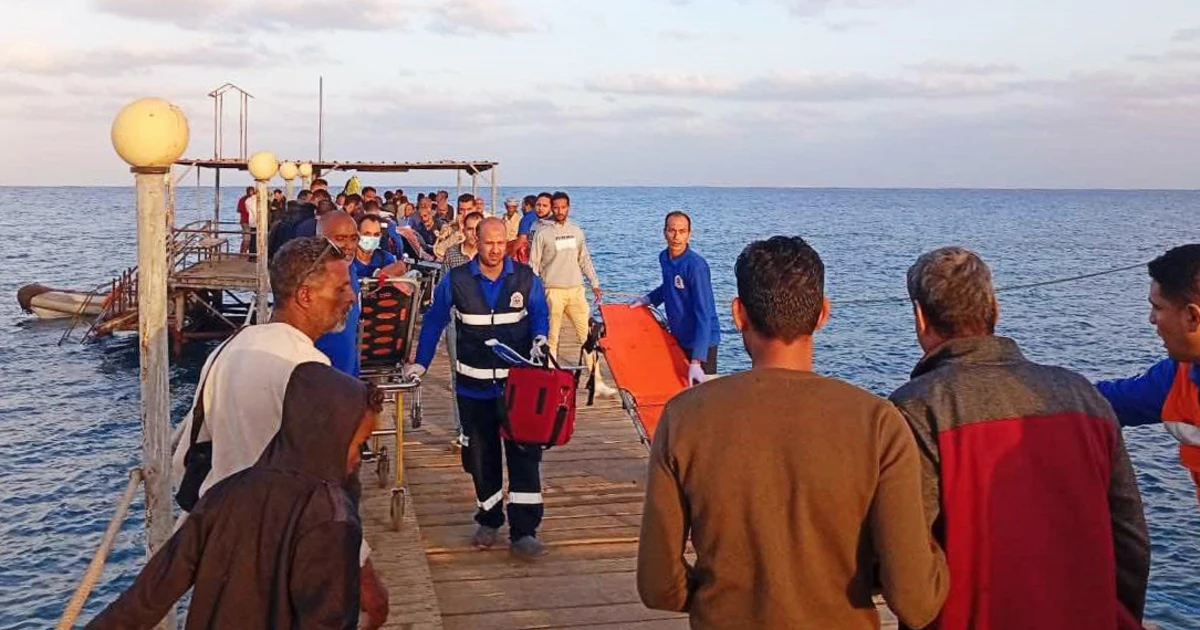A tragic incident unfolded in the Red Sea when a tourist boat capsized, leading to the loss of several lives. The boat, which was carrying tourists, sank unexpectedly, leaving search and rescue teams scrambling to recover survivors and victims. Within 24 hours, four bodies were recovered, though the exact number of passengers on board remains unclear.
The Incident
On [date], a tourist boat carrying an undisclosed number of passengers capsized in the Red Sea, off the coast of Egypt. The boat, which was reportedly on a recreational cruise, was caught in rough waters before sinking. Local authorities quickly dispatched rescue teams to the scene, where divers and boats worked through the night to recover survivors and search for the missing passengers.
As of the following day, four bodies were found, although rescue operations were still ongoing to locate any additional victims or survivors. The exact cause of the capsizing has not yet been fully determined, but eyewitness reports suggest that the boat might have encountered severe weather conditions, contributing to the disaster.
Response from Authorities
Egyptian maritime and emergency response units, along with the local police, were quick to mobilize following reports of the incident. Rescue efforts intensified with the use of boats and helicopters, and a team of divers was deployed to search the waters for any survivors or additional victims.
Authorities have stated that they are investigating the circumstances surrounding the capsizing, including potential issues with the boat’s condition, the weather at the time of the accident, and any violations of safety protocols. The focus of the investigation is to determine the exact cause of the capsizing and whether proper safety measures were in place on the vessel.
Tourism in the Red Sea
The Red Sea region has long been a popular tourist destination, known for its vibrant marine life, clear waters, and beach resorts. It attracts millions of tourists each year, many of whom engage in water-based activities like snorkeling, diving, and boat tours. While these activities are generally safe, this tragic event highlights the potential dangers of maritime excursions, especially when faced with unexpected weather conditions or mechanical failures.
The local government and tourism authorities are likely to face increased scrutiny in the aftermath of the incident, especially regarding the regulations in place to ensure the safety of boats and the passengers onboard. While the region is known for its thriving tourism industry, this incident may lead to calls for stronger oversight of vessels operating in the area.
The Aftermath and Recovery Efforts
The bodies of the victims have been recovered and are being identified. The families of those involved in the accident are being informed, and the Egyptian authorities have pledged to provide support to the victims’ relatives during this difficult time. The recovery operation is ongoing, and authorities are hopeful that they will be able to locate any remaining survivors, though the likelihood of finding anyone else alive after so much time has passed is slim.
Witnesses and survivors have been questioned by authorities to help piece together what happened in the moments leading up to the capsizing. Their testimonies may provide important insights into the event, potentially aiding the ongoing investigation into the circumstances of the disaster.
Impact on Local Tourism and Safety Regulations
The tragedy is likely to impact the local tourism industry in the short term, with some tourists potentially reconsidering water-based excursions in the Red Sea. It may also prompt calls for stricter regulations concerning the safety standards of boats and other vessels in the region. Ensuring that vessels are adequately maintained, equipped with life-saving equipment, and staffed with trained personnel is crucial in preventing further accidents.
In response to the incident, there may be increased scrutiny of the industry, with authorities revisiting current maritime safety regulations. This could include more rigorous checks on the seaworthiness of boats, improved training for staff, and clearer protocols in case of an emergency.
International Reactions
The tragic boat accident in the Red Sea has attracted international attention, particularly from countries whose citizens may have been involved in the disaster. Diplomatic channels are likely to be engaged as foreign governments work with Egyptian authorities to confirm the nationalities of the victims and provide consular assistance to the affected families.
Countries with strong tourism ties to Egypt, such as the United Kingdom, Russia, and Germany, may issue travel advisories or call for improvements to safety standards in Egypt’s maritime tourism industry. The incident has raised awareness of the need for more stringent regulations and enforcement in the global tourism industry, especially when it comes to water-based activities.
The Way Forward
While the investigation into the cause of the capsizing continues, the focus now shifts to offering support to the families of the victims and improving safety standards in the region. As the search and recovery efforts unfold, attention is likely to turn to ensuring that similar incidents do not occur in the future. With the Red Sea being a key global tourist destination, it is essential that tourists can enjoy these attractions in a safe and secure manner.
As Egypt grapples with the fallout from this tragedy, efforts to bolster safety regulations and improve the infrastructure around water-based tourism will be critical. Additionally, the international community will likely continue to monitor developments closely, ensuring that accountability is achieved and that steps are taken to prevent further loss of life.
Conclusion
The capsizing of a tourist boat in the Red Sea has led to the tragic loss of life, with four bodies recovered just a day after the incident. While the search for survivors continues, the tragedy has raised serious questions about the safety of vessels operating in the region and the need for enhanced safety measures in the tourism sector. As authorities investigate the cause of the accident, the hope is that the lessons learned from this incident will lead to stronger regulations and safer practices, preventing such a tragedy from occurring again in the future.



